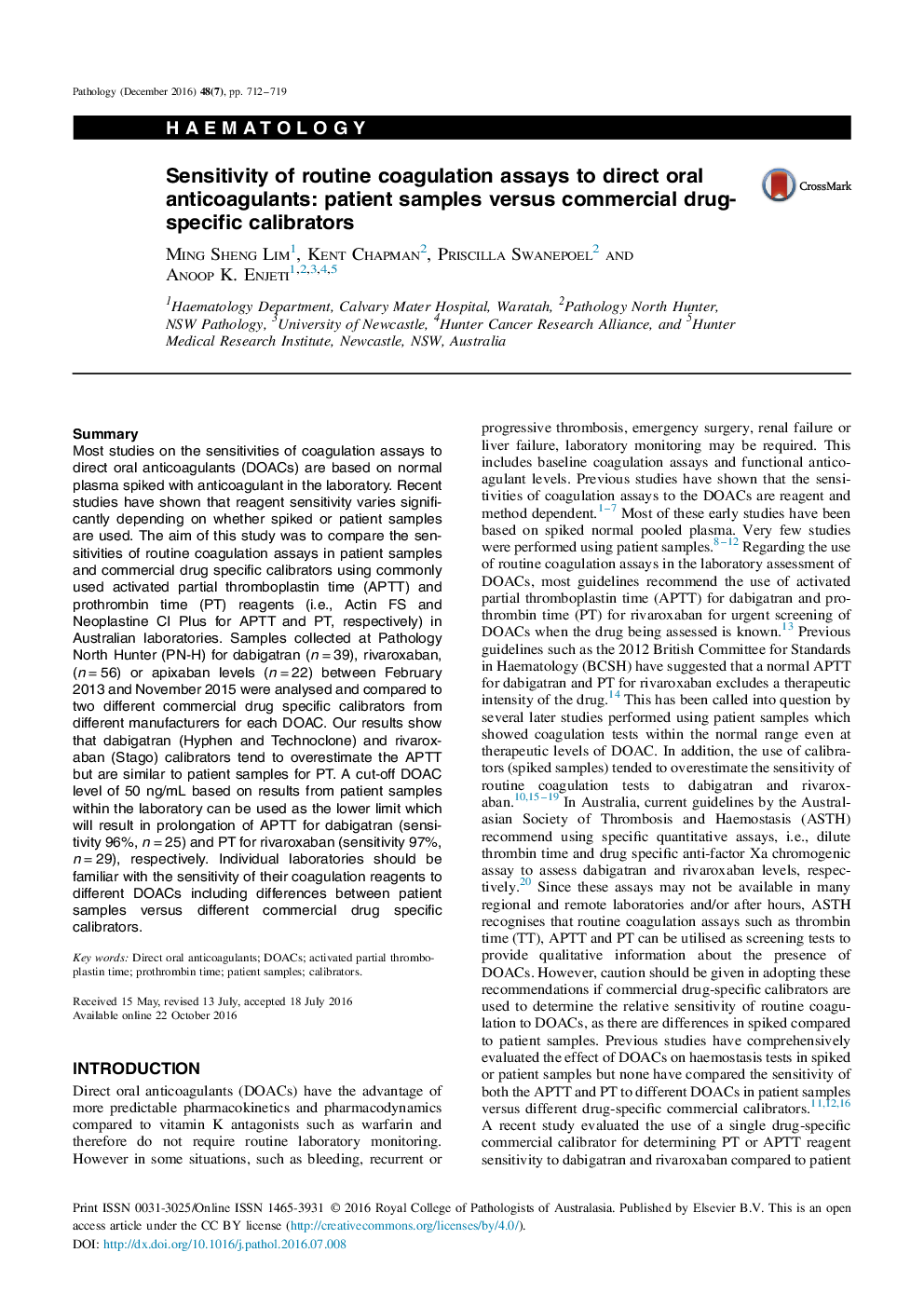| کد مقاله | کد نشریه | سال انتشار | مقاله انگلیسی | نسخه تمام متن |
|---|---|---|---|---|
| 6463263 | 161472 | 2016 | 8 صفحه PDF | دانلود رایگان |
SummaryMost studies on the sensitivities of coagulation assays to direct oral anticoagulants (DOACs) are based on normal plasma spiked with anticoagulant in the laboratory. Recent studies have shown that reagent sensitivity varies significantly depending on whether spiked or patient samples are used. The aim of this study was to compare the sensitivities of routine coagulation assays in patient samples and commercial drug specific calibrators using commonly used activated partial thromboplastin time (APTT) and prothrombin time (PT) reagents (i.e., Actin FS and Neoplastine CI Plus for APTT and PT, respectively) in Australian laboratories. Samples collected at Pathology North Hunter (PN-H) for dabigatran (n = 39), rivaroxaban, (n = 56) or apixaban levels (n = 22) between February 2013 and November 2015 were analysed and compared to two different commercial drug specific calibrators from different manufacturers for each DOAC. Our results show that dabigatran (Hyphen and Technoclone) and rivaroxaban (Stago) calibrators tend to overestimate the APTT but are similar to patient samples for PT. A cut-off DOAC level of 50 ng/mL based on results from patient samples within the laboratory can be used as the lower limit which will result in prolongation of APTT for dabigatran (sensitivity 96%, n = 25) and PT for rivaroxaban (sensitivity 97%, n = 29), respectively. Individual laboratories should be familiar with the sensitivity of their coagulation reagents to different DOACs including differences between patient samples versus different commercial drug specific calibrators.
Journal: Pathology - Volume 48, Issue 7, December 2016, Pages 712-719
